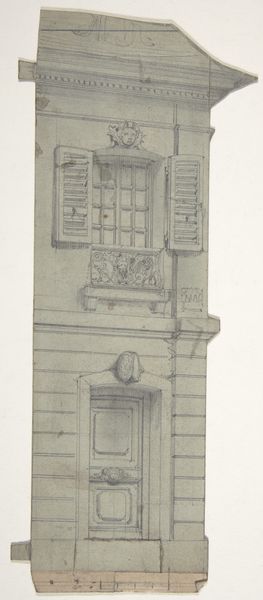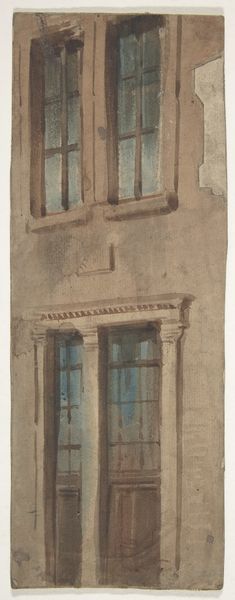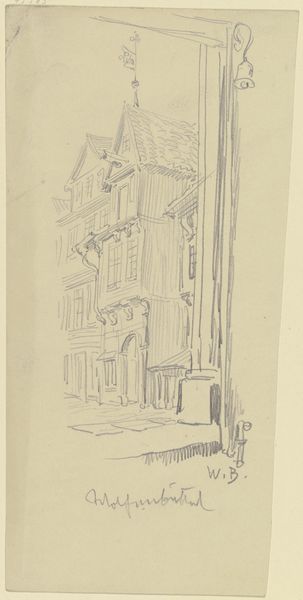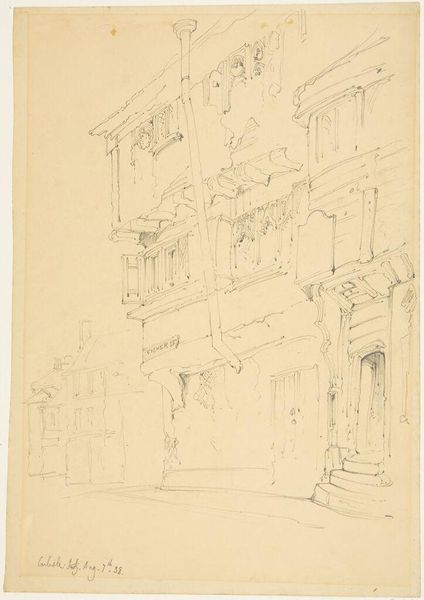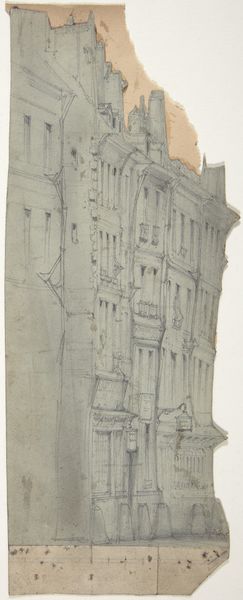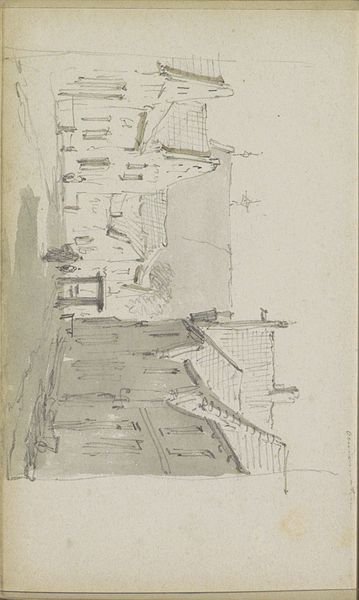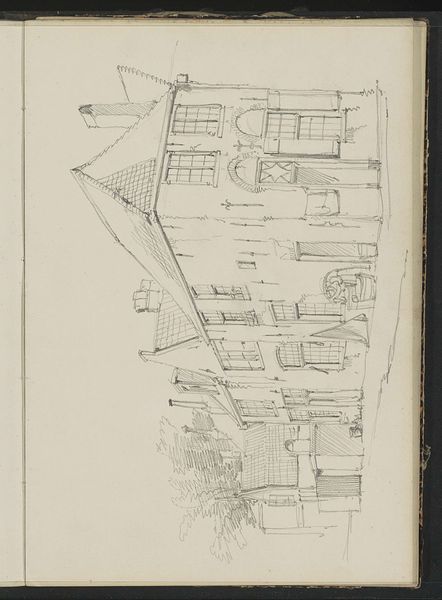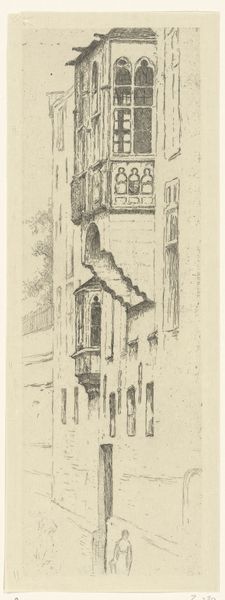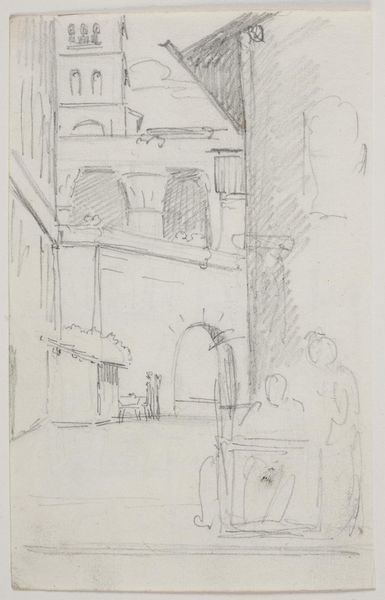
Design for a Stage Set at the Opéra, Paris 1830 - 1890
0:00
0:00
Dimensions: Irregular sheet: 9 9/16 x 2 7/16 in. (24.3 x 6.2 cm)
Copyright: Public Domain
Curator: This is Eugène Cicéri's "Design for a Stage Set at the Opéra, Paris," dating from sometime between 1830 and 1890. Editor: Immediately, I'm struck by its apparent incompleteness, this sketch-like quality, yet there's also a compelling clarity to its structure, its architecture. Curator: Notice the detail captured in pencil, with some watercolor washes. Beyond just documenting architecture, stage design carried immense cultural weight, symbolizing societal aspirations and anxieties of the era. It echoes classical grandeur blended with emergent Romantic sensibilities. Editor: Precisely. And the scale seems crucial, right? It isn't a finished set piece, it's a *design*. I think about all the human hands—carpenters, painters, even stagehands who would have realized this vision. The materials themselves—the wood, the pigments, the very canvas—were charged with social significance, and this simple sketch prefigures the expenditure of labor. Curator: Certainly, there’s a strong sense of theatricality, and it's worth considering what that might represent, culturally and psychologically, given that opera as a spectacle aimed for more than sheer entertainment. Opera engaged collective hopes, and often masked harsh realities. Even today, consider the enduring allure of certain opera houses as iconic symbols of national identity and artistic achievement. Editor: Yes! And what operas were being staged then? How does the aesthetic lean towards romanticism reflected broader movements towards valuing emotionality in that era and society's structures, reflected in costume, props? It connects beyond simple visual pleasure and this seemingly spontaneous impression comes out to its political era and economic factors! Curator: Ultimately, designs like these bridge the gap between architectural fantasies and their symbolic weight within our collective cultural memory. Editor: A window indeed into both artistic practice and broader societal forces and I must say, this discussion really gives another value and sense of how opera was so connected with everyone.
Comments
No comments
Be the first to comment and join the conversation on the ultimate creative platform.


